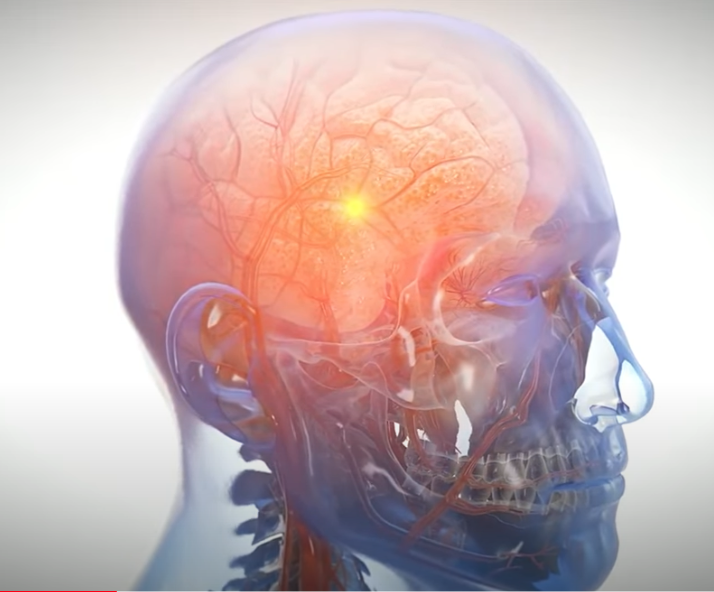By John Gomez
[profileleft] [/profileleft]All too often it happens that a friend, a family member, or a client is involved in what he or she thinks at the time was a minor car accident. But as the hours, days and weeks pass, what the person initially thought was whiplash symptoms that would heal quickly, develop into serious pain and injuries. The reason for this is that the human body has built in mechanisms to protect us from pain.
[/profileleft]All too often it happens that a friend, a family member, or a client is involved in what he or she thinks at the time was a minor car accident. But as the hours, days and weeks pass, what the person initially thought was whiplash symptoms that would heal quickly, develop into serious pain and injuries. The reason for this is that the human body has built in mechanisms to protect us from pain.
The goal of this article is to help anyone involved in a traumatic situation, or representing someone in a traumatic situation, to recognize the signs and symptoms of a more severe injury.
“Fight or Flight”
In 1915, Walter Bradford Brannon, M.D. coined the term “fight or flight” to describe an animal’s response to threats in bodily changes to a harmful event, attack or threat. (See generally Walter Bradford Cannon, Bodily Changes in Pain, Hunger, Fear, and Rage (New York: Appleton-Century-Crofts, 1929).) The concept explains an automatic physiological reaction in the body that occurs in response to pain, trauma, harm or fear. (Id.) When the body’s “fight or flight” response is activated, the amygdala, the area of the brain that contributes to emotional processing, sends a distress signal to the hypothalamus. (Understanding the Stress Response, Harvard Health Publications: Harvard Medical School (Mar. 1, 2011), https://www.health.harvard.edu/staying-healthy/understanding-the-stress-response.) The hypothalamus then communicates to the rest of the body through the sympathetic nervous system. The sympathetic nervous system sends signals through the autonomic nerves to the adrenal glands which release hormones into the blood system. (Id.)
The significance is that this chemical cascade of hormones (primarily epinephrine/adrenaline, noradrenaline, and cortisol) causes the body’s impulses to sharpen and a person’s perception of pain to diminish. The body is preparing us to fight or flee, rather than succumb to pain because of its assessment of imminent harm or stress. The hormones are acting as the body’s natural and immediate pain killer.
“In effect, what is happening, is that the release of these hormones and the increased hormone levels constrict blood vessels to non-vital processes and blunt pain perception,” says Michael Hoaglin, M.D., an emergency room physician at Duke University Hospital. “This fight or flight mode sends us back to our most primal instincts — to focus on what matters to survive the acute situation.”
Understanding an Emergency Room Diagnosis
Emergency rooms, trauma care centers, and urgent care facilities are not set up for long-term care. In the trauma setting ER physicians’ priority is to assess the patient’s condition rapidly and accurately, stabilize the patient, and determine whether the patient should be transferred and kept in the hospital for further treatment or released with follow-up instructions. (Michael Rotondo, MD, About Advanced Trauma Life Support, American College of Surgeons, https://www.facs.org/quality-programs/trauma/atls/about.)
On the other hand, emergency room physicians will not always be looking for medical issues that do not present immediate need for treatment or diagnosis. Nonetheless, these conditions are often those which require ongoing care, care of specialists and surgical intervention down the road.
“Given adequate information about the mechanism of the accident or trauma and immediate state of the patient, most emergency room physicians will give anticipatory guidance for expected pain progression and warning signs of a worsening situation,” says Hoaglin.
“Soft-Tissue” Injury and “Whiplash” Injury Does Not Mean Minor Injury
Even if an ER physician suspects a torn rotator cuff, or ligament tears in the neck, spine or elsewhere, the likely advice will be to follow up with your primary doctor or to see a specialist for further treatment. Soft-tissue injury does not mean minor injury – especially for the person who is suffering.
The American Association of Orthopedic Surgeons (AAOS) breaks soft-tissue injuries into two categories: 1) acute injuries that are caused by sudden trauma that may include sprains, strains and contusions, and 2) overuse injuries that occur gradually over time such as bursitis or tendinitis. (Sprains, Strains and Other Soft-Tissue Injuries, American Academy of Orthopaedic Surgeons https://orthoinfo.aaos.org/topic.cfm?topic=A00111.) Ligaments, muscles, joint capsules, intervertebral disks, and cartilaginous endplates can all be classified as types of “soft tissue.” (ACR Appropriateness Criteria, Suspected Spine Trauma, American College of Radiology (1999, rev. 2012).)
AAOS further defines a “sprain” as a “stretch and/or a tear of a ligament.” Sprains are graded 1-3 with a Grade 3 Sprain being a “complete tear of the ligament…” that “causes significant instability and makes the joint nonfunctional.” (Id.) Likewise, AAOS defines a “strain” as an injury to a muscle and/or tendon. (Id.) Surgery may be required for more serious “sprains” and “strains.” (Id.) Thus, do not be fooled by the phrase sprain/strain in your medical reports. A sprain/strain as diagnosed by an emergency room physician may still be a major injury – it might even require surgery.
Whiplash refers to a “neck injury due to forceful. Rapid back-and-forth movement of the neck. (Mayo Clinic Staff, Whiplash, Mayo Clinic (Jan. 15, 2015), https://www.mayoclinic.org/diseases-conditions/whiplash/basics/definition/con-20033090.) Symptoms of whiplash can last months or longer, and for some may evolve into chronic pain conditions. (Id.) Most important, however, is that a diagnosis of whiplash does not rule out other acute injuries to the intervertebral disks or nerves.
Musculoskeletal Injuries Can Get Worse Over Time
In addition to the “fight or flight” response dulling pain, studies have shown that the delay in symptoms may due to other factors as well. For example, neck pain may develop in subsequent hours, days and even weeks due to the gradual effusion and microscopic hemorrhage in the neck flexor muscles. (Rene Caillet, Neck and Arm Pain (F.A. Davis Co., 3rd Ed., 1991).)
Many musculoskeletal injuries improve with rest, ice and anti-inflammatory medications. However, many others can get worse over time, in part, because they may be difficult to diagnose due to swelling or other more significant acute injuries after trauma. (Michael T. Balla., et al, Commonly Missed Orthopedic Problems, 57 Am. Fam. Physician 267-274 (Jan. 1998).) When not diagnosed and managed early, some musculoskeletal injuries may result in long-term pain and even disabling conditions.
Conclusion
From a physiological perspective, trauma is not a single insult, but a combination of hemorrhage, tissue injury, pain and fear. (B.A. Foex, Systemic Responses to Trauma, 55 No. 4 Brit. Med. Bulletin 726-743 (1999).)
So remember, when someone tells you she is fine after an accident, signs and symptoms of more series injuries can, and often do, manifest over time. Be patient and understanding with those who continue to be in pain even if they are told at the ER they have suffered soft-tissue or whiplash injuries. Be on the lookout for signs and symptoms that the pain is worsening or plateauing and suggest the person see a specialist.







